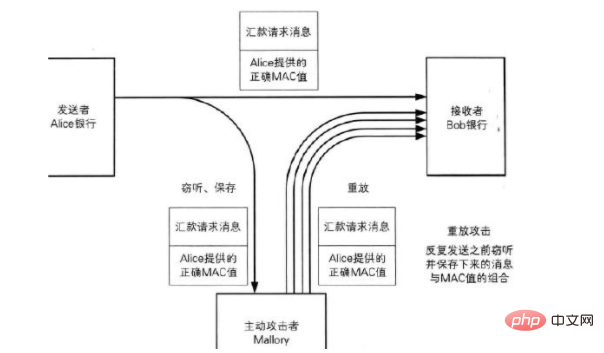Home >Common Problem >What kind of attack is monitoring network traffic to obtain passwords?
Monitoring network traffic to obtain passwords is a replay attack; a replay attack is also called a replay attack or replay attack. It means that the attacker sends a packet that has been received by the destination host to achieve the purpose of deceiving the system. It is mainly used In the identity authentication process, it destroys the correctness of the authentication.

Replay attack.
Replay Attacks (Replay Attacks), also known as replay attacks and replay attacks, refer to the attacker sending a packet that has been received by the destination host to achieve the purpose of deceiving the system. It is mainly used for identity authentication. process, destroying the correctness of the certification.
Replay attacks can be carried out by the initiator or by an enemy who intercepts and resends the data. Attackers use network monitoring or other methods to steal authentication credentials and then resend them to the authentication server. Replay attacks can occur during any network pass and are one of the common attack methods used by hackers in the computer world.

Extended information
After attackers use FTP, Telnet and other tools to exploit system vulnerabilities to gain control of the target host system, they will do two things Things: clearing records and leaving backdoors. He will change certain system settings, place Trojan horses or other remote control programs in the system so that he can re-enter the system unnoticed in the future.
Most backdoor programs are pre-compiled. You only need to find a way to modify the time and permissions to use them. Even the size of the new file is exactly the same as the original file. Attackers generally use rep to deliver these files so as not to leave FTB records. After clearing logs, deleting copied files, etc. to hide their traces, the attacker begins the next step.
The above is the detailed content of What kind of attack is monitoring network traffic to obtain passwords?. For more information, please follow other related articles on the PHP Chinese website!